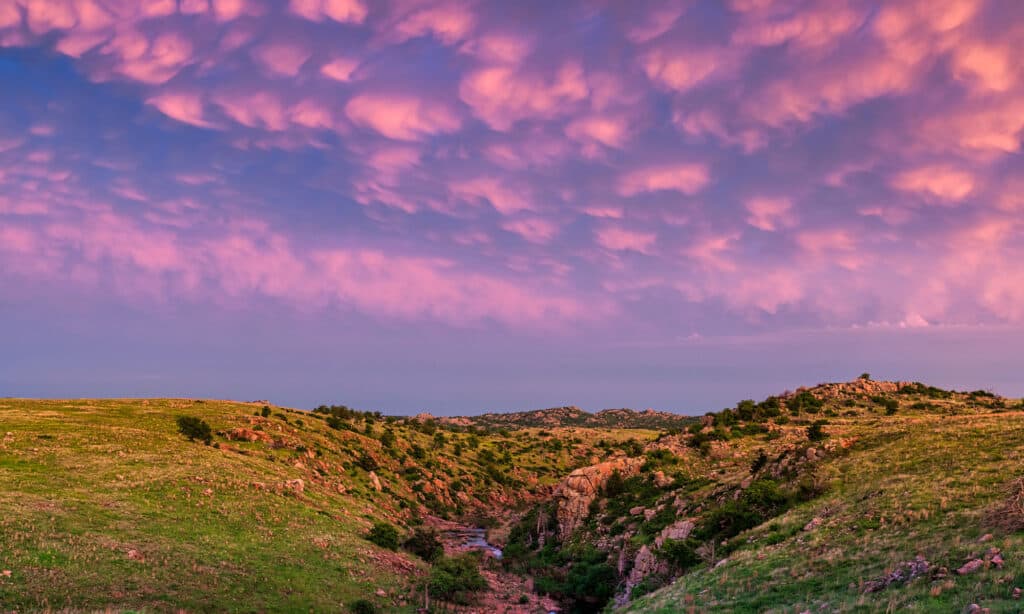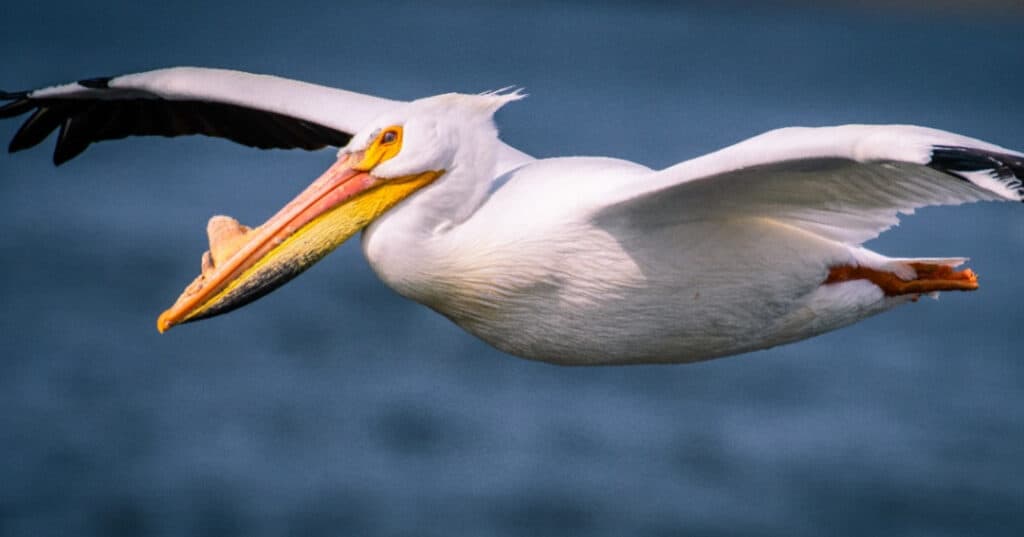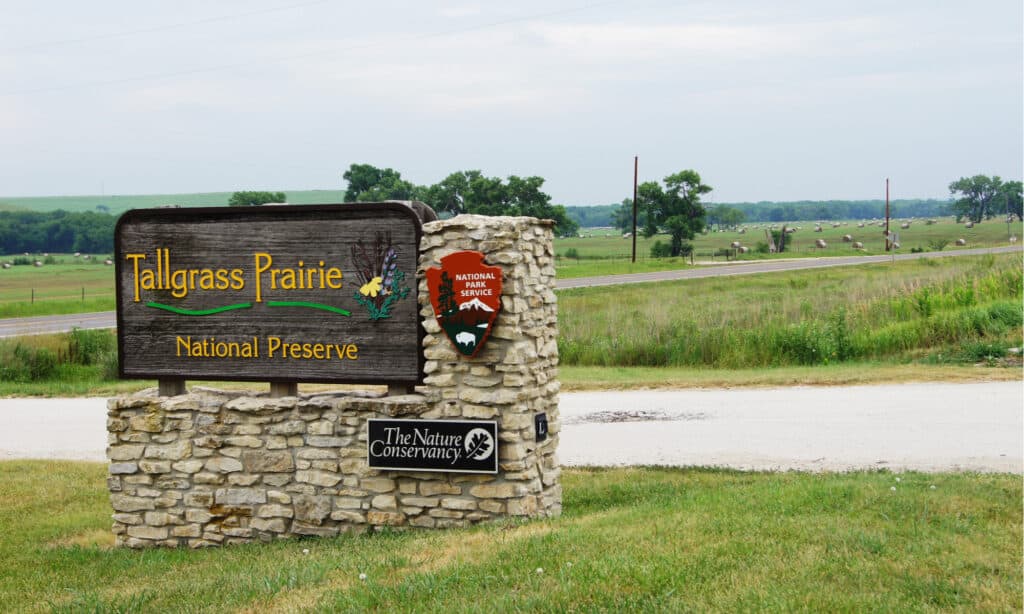As any outdoor enthusiast would find, one of the best things about living in Oklahoma is the sheer diversity of the outdoor environment in the state. The state has a variety of natural habitats ranging from wetlands to forests, mountainous areas, and tallgrass prairies. One of the implications of having such a diverse landscape is the variety of wildlife the state hosts. In addition to being a great place for hiking, camping, biking, and other outdoor activities, Oklahoma is also a perfect destination to go bird watching. The state has some of the most amazing birding locations right at the country’s center. With nine national wildlife refuges, three national parks, and a total of 143,720 acres of important bird watching areas, the following are Oklahoma’s best bird watching spots you can explore this summer.
1. Tishomingo National Wildlife Refuge
The Tishomingo National Wildlife Refuge is just 20 miles short of the state line between Oklahoma and Texas. This 4000-acre refuge hosts the Cumberland Pool, an important birding site for intense water birding activities. Different species of waterfowl and water birds visit the pool yearly, and there are several native species in this area.
There are 2 main hiking trails within the refuge. These trails are close to the Cumberland pool, the center of birding activities in this wildlife refuge. There’s an observation platform on the northside of this pool as well. In addition, several other observation points are located all around the refuge.
Common Bird Species at the Tishomingo Wildlife Refuge

The Tishomingo National Wildlife Refuge has 16,464 acres of protected land for birds to freely roam through.
©iStock.com/Cheri Alguire
There are a lot of waterbird activities in the area near the Cumberland Pool. You’ll find many wading birds in places with mudflats and other areas with low water. Several birds also nest in different spots within the refuge. Some bird species you’re likely to see include:
- Roseate Spoonbill
- Northern Shoveler
- Yellow-Throated Warbler
- Bald Eagle
- Barred Owl
- Summer Tanager
- Canada Goose
- Indigo Bunting
- Snow Goose
- Red-Headed Woodpecker
- Scissor-Tailed Flycatcher
- Blue Grosbeak
- Greater Roadrunner
2. Wichita Mountains Wildlife Refuge
The Wichita Mountains is most notable for its striking reddish granite rock formation. However, the 59,000-acre refuge in southwestern Oklahoma is also a pristine birdwatching location. If you’re a lover of wildlife in general, you’ll find this refuge an interesting place to visit. Lots of stunning animals are in plentiful supply all over the refuge.
While birds are well-abundant in the refuge’s oak forests and granite uplands, birdwatchers will find the 20,000 acres of mixed-grass prairie particularly attractive for birdwatching. There are also numerous lakes in the area where waterfowl alight during their spring migration.
Common Birds at Wichita Mountains Wildlife Refuge

You can see several species of native southwestern birds at the Wichita Mountains Wildlife Refuge.
©iStock.com/Brent_1
The Black-capped Vireo is the most popular resident bird species at the Wichita Mountains Wildlife Refuge. It is an endangered species, and this location is one of the few places you can find it. You will also find loads of native southwestern bird species here, including many migratory birds. Some of the most notable finds at this refuge include:
- Red-Headed Woodpecker
- Burrowing Owl
- Wild Turkey
- Black-Chinned Hummingbird
- Canyon Wren
- Mississippi Kite
- Common Poorwill
- Wild Turkey
- Rock Wren
- Greater Roadrunner
- Cave Swallow
- Painted Bunting
3. Salt Plains National Wildlife Refuge
The Salt Plains National Wildlife Refuge is a 32,197-acre refuge in north-central Oklahoma. This area’s most prominent landscape feature is the huge shallow lake and associated salt flat at the center of the refuge. Although the landscape is mostly bare, several birds call this area home. The barrenness of the landscape also makes it easier for bird watchers to spot the birds.
There’s a visitor’s center where you can get a map and detailed information for navigating this site. You can explore the refuge by walking on one of the several hiking trails or taking a wildlife drive through the open area.
Common Birds at the Salt Plains National Wildlife Refuge

American white pelicans have a wingspan of 9 feet.
©Jerek Vaughn/Shutterstock.com
The Salt Plains of this refuge is an ideal habitat for hundreds of bird species, especially the American White Pelican that passes through the area. There are also several birds like the Greater Roadrunner and Wild Turkey that nest permanently in the refuge. Other notable bird species include:
- White-Faced Ibis
- Mississippi Kite
- Snowy Plover
- Black-Necked Stilt
- American Avocet
- American White Pelican
- Painted Bunting
- Bald Eagle
- Western Kingbird
- Snowy Egret
4. Mohawk Park
The Mohawk Park in Tulsa, Oklahoma, is home to more than 250 bird species. The park has a zoo, a golf course, and a nature center. But the center of birding activity is Lake Yahola, located on the park’s western side. It attracts numerous migratory waterbirds. The area around the lake also includes wetlands, grasslands, and woodlands that have numerous great birding spots.
You can get a map of the park at the Mary K. Oxley Nature Center. You’ll also get accurate information about the hiking trails and boardwalk within the park. There’s also an observation tower, a great vantage point to watch for different bird species.
Common Bird Species at the Mohawk Park

Pileated Woodpeckers are large birds, nearly as big as crows.
©FotoRequest/Shutterstock.com
Lake Yahola attracts migratory bird species that come into the area from Canada and the northern U.S. states. Another profound birding spot within this park is the North Woods, which has a hardwood forest where many bird species nest. Some of the most notable bird species in this location include:
- Pileated Woodpecker
- Prothonotary Warbler
- Yellow-throated Warbler
- Summer Tanager
- Yellow-crowned Night-Heron
- Mississippi Kite
- Broad-winged Hawk
- Great Horned Owl
- Barred Owl
- Scissor-tailed Flycatcher
- Painted Bunting.
5. Tallgrass Prairie Preserve
The Tallgrass Prairie Preserve is what remains of the 140 million acres of tallgrass prairie that covered most of North America millions of years ago. Although the 39,000-acre tract of prairie plains is only a small fraction of what it used to be, it is still a great place to visit, offering diverse animal species.
The nature preserve is located north of Pawhuska, Oklahoma, and is one of the biggest of Oklahoma’s 5 best bird watching spots. There are miles of driving roads that you can use to explore the preserve. You’ll also find several hiking trails cutting across the different parts of this pristine Oklahoma bird watching spot.
Common Bird Species at the Tallgrass Prairie Preserve

The Tallgrass Prairie Preserve provides a safe and natural home to at least 150 different bird species throughout the year.
©Barbara Kalbfleisch/Shutterstock.com
Beyond being a great bird watching location, every nature lover will enjoy exploring the Tallgrass Prairie Preserve. Numerous migratory and nesting bird species can be found across the grassland during various seasons. Some of the most notable bird species you’re likely to find here include:
- Northern Bobwhite
- Wild Turkey
- Upland Sandpiper
- Loggerhead Shrike
- Bell’s Vireo
- Grasshopper Sparrow
- Henslow’s Sparrow
- Painted Bunting
In addition to these Oklahoma’s best bird watching spots, other great places you can visit for bird watching in Oklahoma include: Lake Hefner, Hackberry Flat Wildlife Management Area, Black Mesa Preserve, and Sequoyah National Wildlife Refuge.
Up Next:
- Montana’s 5 Best Bird Watching Spots This Summer
- Massachusetts’ 5 Best Bird Watching Spots This Summer
- Nebraska’s 6 Best Bird Watching Spots This Summer
- Wisconsin’s 10 Best Birdwatching Spots This Summer
The photo featured at the top of this post is © iStock.com/mirceax
Sources
- Bird Informer, Available here: https://www.birdinformer.com/birding-oklahoma/
- Audubon, Available here: https://www.audubon.org/news/birding-oklahoma
- World Birds Joy of Nature, Available here: https://worldbirds.com/birds-of-oklahoma/
Thank you for reading! Have some feedback for us? Contact the AZ Animals editorial team.






